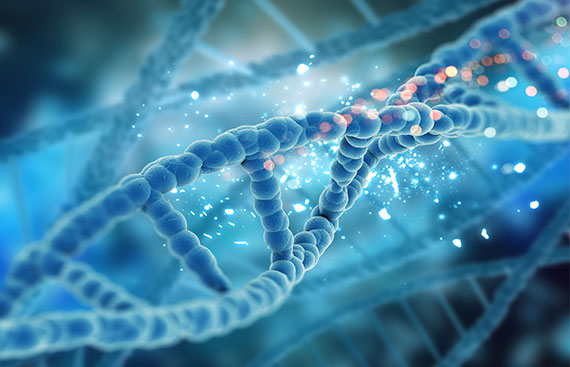Hexarelin Peptide Guide

This article will focus on Hexarelin peptide and the way it works. Researchers have studied Hexarelin primarily for its suggested potential to release of growth hormone from the anterior pituitary gland. Studies suggest Hexarelin may take many approaches to do this.
Hexarelin is a synthetic hormone that may mimic ghrelin. Ghrelin is primarily generated in the stomach and then transported by the blood to the hippocampus, where it binds with the growth hormone secretagogue receptor (GHS-R1a).
Subsequent binding activates many physiological processes, including GH secretion, cardiomyocyte protection, energy balance maintenance, and musculoskeletal growth and maturation.
Research suggests that Hexarelin, like ghrelin, may activate a phospholipid-dependent protein kinase (PKC) signaling cascade [i] by binding to the growth hormone secretagogue receptor (GHS-R1a). The brain and pituitary gland have been speculated by researchers to work together to increase GH secretion in response to this stimulus.
Scientists hypothesize somatostatin, also known as growth hormone-inhibiting hormone (GHIH), may have its production suppressed by Hexarelin. As a result, there might be more GH in the blood.
Hexarelin Peptide: What is it?
Hexarelin Acetate, or Examorelin, is a short synthetic peptide of the growth hormone secretagogue (GHS) class [i]. It has just six different amino acids. The amino acid sequence of this GHRP is as follows: His-D-2-methyl-Trp-Ala-Trp-D-Phe-Lys-NH2. Because of its very small form, it is hypothesized to be both more stable and possibly more effective.
Hexarelin Peptide Mechanism of Action
Several empirical studies suggest that because the growth hormone secretagogue receptor (GHS-R1a) is present in the peripheral organs, Hexarelin peptide may also provide a targeted effect in the heart, bones, adrenal gland, and digestive system. Research on the interaction of Hexarelin with CD36 [ii] receptors in the heart is expanding and contributing to the research field in a valuable way.
Additional theoretical investigations speculate Hexarelin may trigger prolactin and cortisol secretion through other endocrine routes, such as ACTH.
Hexarelin Peptide's Properties
Recent research suggests Hexarelin is a GHRP that may induce natural growth hormone (GH) production. Similar theoretical investigations suggest it may promote the development of new skeletal muscle tissue. Lean muscle mass is thought to be developed due to this, and both muscular size and strength are increased, researchers speculate.
Active researchers suggest improved cardiovascular function is caused by Hexarelin's binding to CD36 receptors on blood cells, which keeps cardiac parameters like left ventricular ejection fraction (LVEF), cardiac output, and stroke volume within normal ranges and reduces peripheral resistance in the blood vessels [ii]. As a result, test models observed under active conditions appear to be better able to reach the physical limits necessary to maximize their performance.
Many empirical studies suggest growth hormone (GH) is released in response to Hexarelin peptide, and its use may potentially lead to fat burning and consequent weight reduction.
Scientists hypothesize the skeletal system may reap properties from this peptide. Professionals imply this may be achieved by promoting the healthy growth of connective tissue (tendons, ligaments, and joints) and increased joint mobility. Studies suggest Hexarelin may promote the development of new skeletal muscle tissue. This process may increase muscle mass and strength, leading to a lean body mass gain. As a result of this increase in bone and muscle mass, research suggests the subject is better able to withstand trauma.
Additional studies suggest Hexarelin may promote the rapid and complete healing of wounds and injuries by stimulating the production of growth hormones. It is also thought to significantly enhance sleep quality by restoring normal sleep cycles.
Hexarelin Peptide vs. Ipamorelin Peptide
Several studies suggest both peptides have a similar mode of action and main properties, but the differences appear to lie in the tertiary traits they may provide. Scientists have suggested Hexarelin promotes cardiovascular health, whereas Ipamorelin may potentially increase bone density.
The variety of peptides accessible is another point of differentiation. Animal studies have led researchers to believe combining the two peptides may have a more powerful impact. On that note, it is important to remember these compounds have not yet been approved for consumption of any kind. All the data presented in this piece is purely for academic and educational purposes and should be treated as such. Visit this website to learn more about peptide availability and how peptides are accessible only to licensed professionals, academics, or scientists performing laboratory research.
Hexarelin Peptide vs. GHRP-6 Peptide
Research suggests both peptides may have the same purpose. However, unlike Hexarelin, GHRP-6 [iii] may have more difficulty stimulating other neuroendocrine pathways.
Studies suggest GHRP-6 peptide may be less powerful than Hexarelin peptide since it has a shorter half-life to exert its potential. Thus, Hexarelin may triumph in this aspect against GHRP-6.
